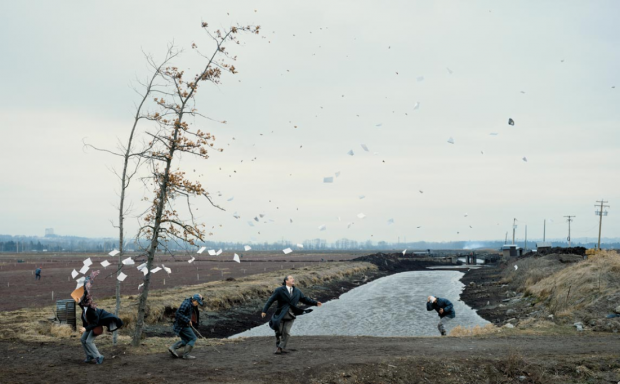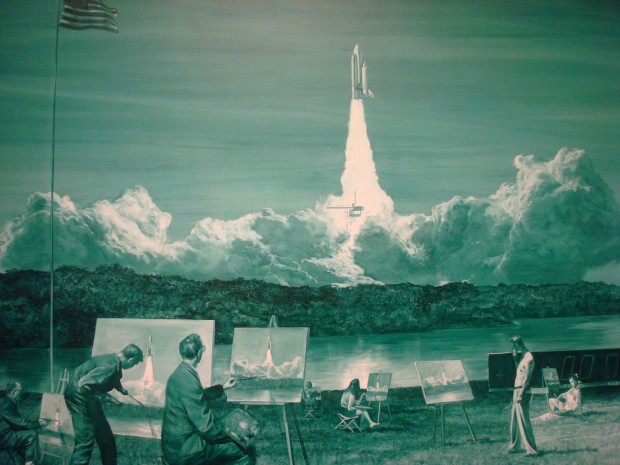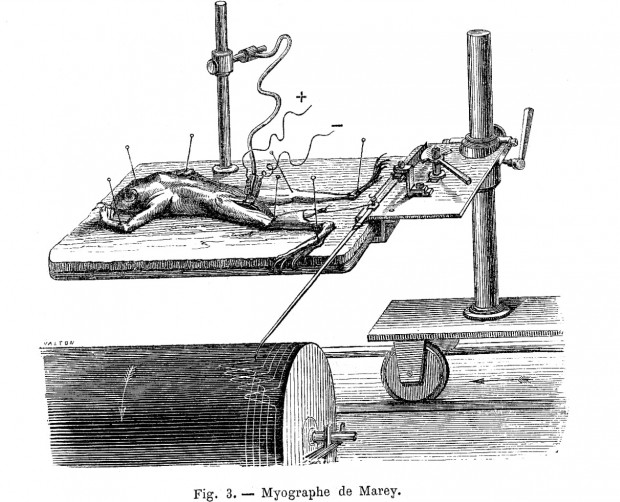An iconographic and text archive related to communication, technology and art.
☛ La machine animale: locomotion terrestre et aérienne by Étienne Jules-Marey, Paris: Germer Baillière, 1873, p. 31 (The original French copy hosted by Google Books is the Elibron Classics Replica Edition, itself an unabridged facsimile of the edition published in 1873) Public Domain.
Best known for his key participation in the development of chronophotography (which in turn helped spring the invention of a variety of cinematographic apparatus), French scientist Étienne Jules-Marey is also credited for perfecting Hermann von Helmholtz’s myograph. A myograph is a device capable of recording the force generated by a contracting muscle (see explanations and diagram over at the University of New Mexico). Here’s how Jules-Marey descibes the above illustration (from the English edition also Public Domain):
In Fig. 3 the frog is represented in the experiment, fixed, by means of pins, on a piece of cork.
The brain and spinal marrow have been previously destroyed, so as to extinguish all voluntary movement and sensibility. Although, to all appearance, the animal is dead, it will nevertheless retain for several hours the circulation of the blood, and the power of motion under the influence of electric discharges. An electric excitator conveys the current from an induction coil to the nerve of the frog.
In order to register these movements and to depict them by curves which express their different phases, they are transmitted to the myograph in the manner already described. The tendon of the muscle is cut, and connected by a wire which is fastened at the other end to the lever of the registering apparatus; the latter moves in a horizontal plane, when the contractile force of the muscle is exerted upon it. As soon as the muscle cease to act, the lever returns, under the pressure of a spring, to its original position. At the free extremity of the lever is a point which traces, on a turning cylinder covered with smoke paper, the motions produced by the alternate contraction and relaxation of the muscle. (pp. 32-33)
The illustration, along with its explicit description, may convey a sense of dread. The placid and calm ways in which Jules-Marey goes on to explain how (part of) a dead animal can be reanimated seem to amplify the apparent monstrosity of the whole experimentation.
And monstrous it is, in a way. The device use to record muscle movements comes many year after the idea to experiment the effect of electricity on dissected animals. This idea was indeed investigated nearly a century before (around 1780-1790) by Luigi Galvani. His experimentations are often cited as a major source of inspiration for Mary Shelley’s Frankenstein (the first edition was published in 1818). They also play an important role in establishing a general but strong relation between life and electricity (take a moment and think about all the characters in all those movies whom are killed by flashy, zigzagging electric arcs).
However, there’s more to the myograph than meets the (horrified) eye. Jules-Marey research is far from being limited to the effect of electricity on dead animals. He was preoccupied by a more general problem, technological as well as epistemological. How is it possible to translate a continuous and dynamic stimuli into discrete, measurable units? The need for such a translation stems from the limit of our five senses: there are phenomena which we are unable to grasp by ourselves. Apparatus and devices are needed in order to understand realities beyond human measure (too fast, too strong, too small, too far away). Such units of measurement represent that which cannot be immediately present to use (be it quantitative or qualitative representation). And therein lies the problem: how to adequately represent something by presenting something else in its place? One could say that this problem is not only a scientific problem (be it biology, physics, semiology or communication) but an artistic one as well. The two examples below illustrate this idea (and close this post on a less morbid note).
First, a photograph by Jeff Wall: “A Sudden Gust of Wind (after Hokusai)” (transparency in lightbox, 2290 x 3770 mm, 1993, © Jeff Wall).

Second, a painting by Mark Tansey: “Action Painting II”, oil on canvas, 193cm x 279.4 cm, 1984.

• • •
See also: Animals in motion: from paleolithic cave paintings to 1,200fps videos
- By Philippe Theophanidis
- on
- ― Published in Art, Technology
- Tagged: anatomy, animal, author, book, electricity, experimentation, frog, illustration, machine, muscle, myograph, representation, science, vintage

